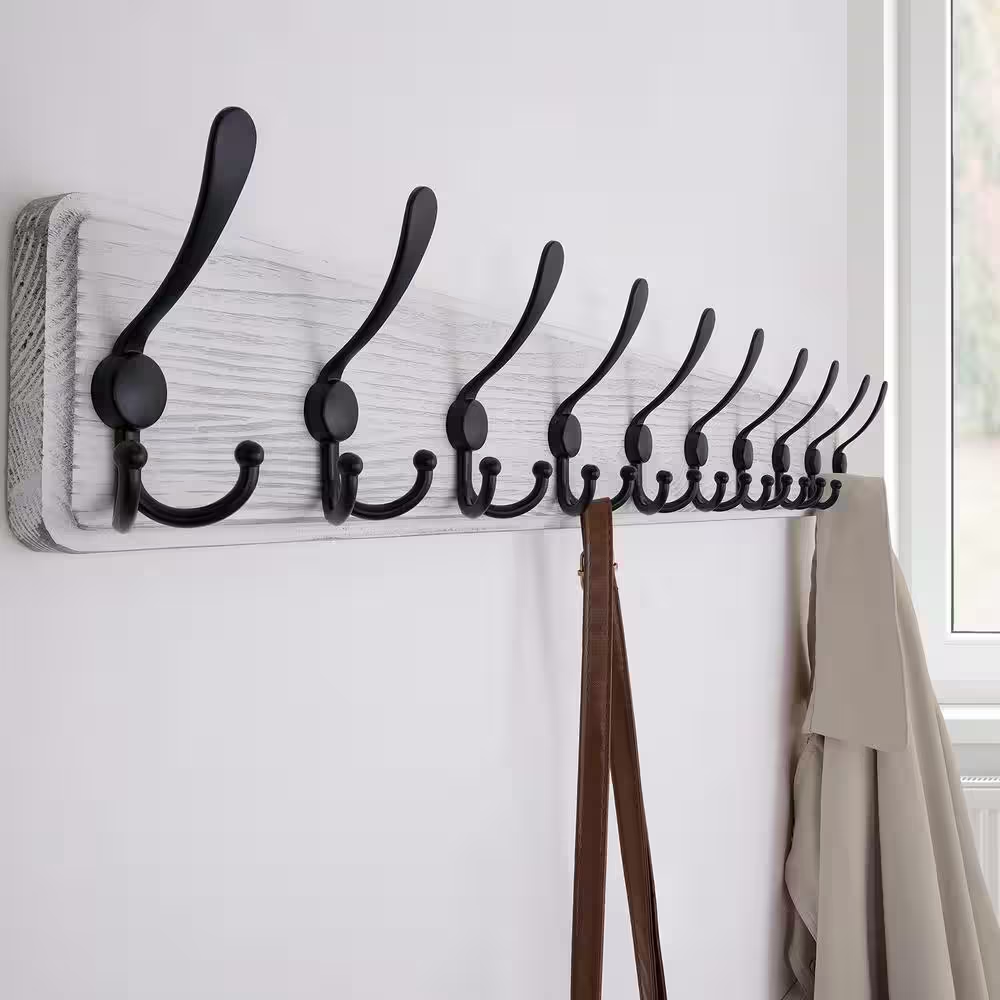
An entryway is the first space visitors see when they enter your home. It sets the tone for the rest of the house. Adding stylish and practical coat hooks can significantly enhance this area. Coat hooks are more than mere convenience; they can serve as a design element that complements your home décor. In this article, we will explore the different styles, materials, and benefits of coat hooks, as well as tips for choosing and arranging them effectively in your entryway.
Types of Coat Hooks
Coat hooks come in various styles to suit different needs and spaces. Selecting the right type can enhance both functionality and aesthetics. Below are the three main types of coat hooks to consider.
Wall-Mounted Coat Hooks
Wall-mounted coat hooks are fixed directly onto walls. They are ideal for rooms with limited floor space. These hooks offer a permanent and sturdy solution for hanging items. They can hold coats, bags, hats, and more. Many designs are available, ranging from sleek modern to vintage rustic. Wall-mounted hooks are perfect for entryways, bedrooms, or kitchens.
Over-the-Door Coat Hooks
Over-the-door coat hooks are easy to install. They hang over the top of doors, requiring no drilling. These hooks are a great option for renters or temporary needs. They save space and can be moved around as needed. Over-the-door hooks are perfect for hanging robes, towels, or lightweight coats. They work well in bedrooms, bathrooms, and dorm rooms.
Freestanding Coat Hooks
Freestanding coat hooks are designed as standalone racks. They don’t require wall space and can be placed anywhere. These are especially useful in large spaces or rooms with many users. Freestanding hooks can hold multiple items and often come with a decorative element. They are a great choice for offices, lobbies, or large entrance areas. Choose a design that complements your décor for added style.
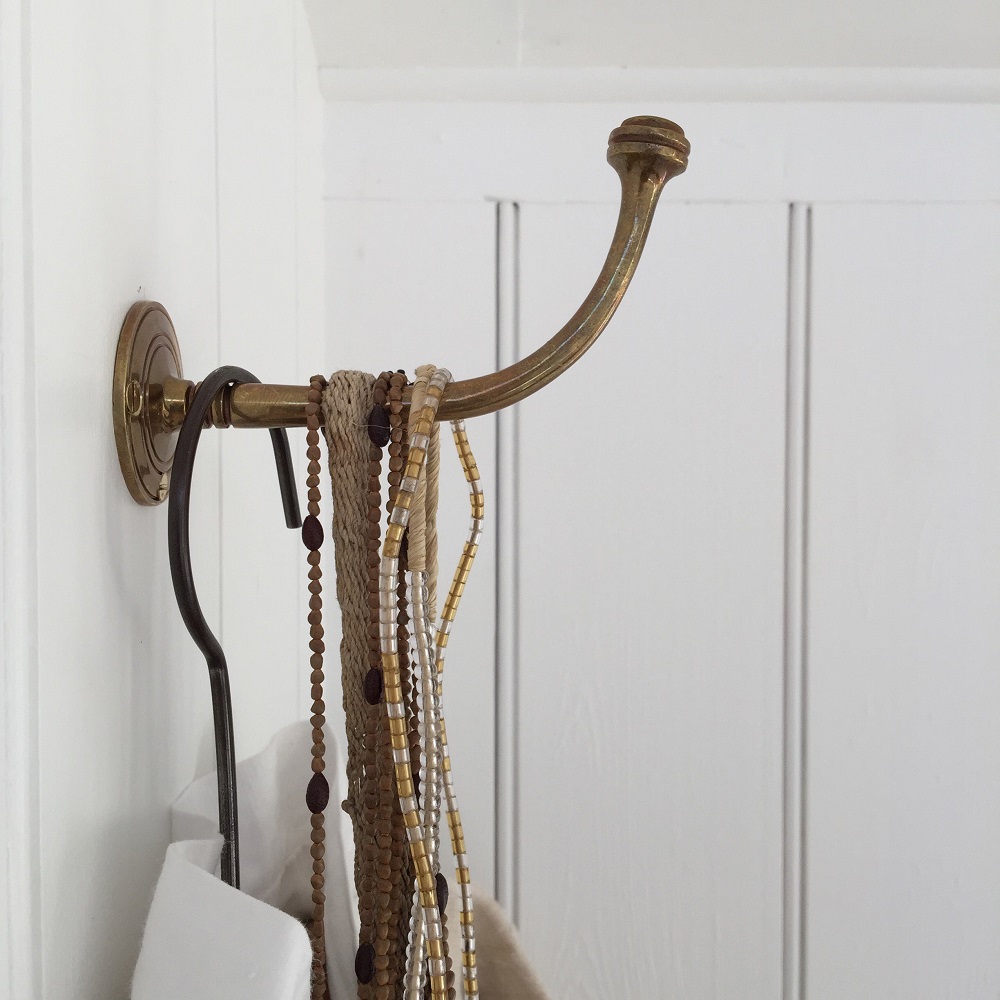
Materials Used in Coat Hook
Coat hooks are made from various materials that offer durability, functionality, and style. Choosing the right material depends on your needs, décor, and budget. Below are the common materials used in coat hooks.
Wooden Coat Hooks
Wooden coat hooks add warmth and a natural feel to spaces. They come in different types like oak, pine, or walnut. These hooks work well in rustic, traditional, or modern interiors. Wooden coat hooks can be painted, varnished, or left unfinished, making them versatile in design. They are sturdy but may need protection from moisture in humid areas. Wooden hooks are ideal for homes, offices, and kids’ rooms.
Metal Coat Hooks
Metal coat hooks are known for their strength and durability. Common types include steel, aluminum, and brass. They come in sleek, minimal designs or ornate, decorative styles. Metal hooks are rust-resistant if treated and are perfect for heavy items like winter coats or bags. These hooks fit well in industrial, modern, or elegant spaces. They are often found in entryways, garages, and lobbies.
Plastic Coat Hooks
Plastic coat hooks are lightweight, affordable, and versatile. They come in countless colors, shapes, and styles. These hooks work well for light items such as scarves, umbrellas, or kids’ belongings. Plastic hooks are easy to clean and ideal for casual spaces. They are commonly used in bathrooms, playrooms, or dorms due to their practicality and cost-effectiveness.
Benefits of Using Coat Hook
Coat hooks provide both functional and aesthetic value to spaces of all kinds. They are simple yet impactful additions that can bring order and style to your environment. Below are some key benefits of using coat hooks.
Space-Saving Features
Coat hooks maximize the use of vertical space. They are perfect for small rooms or tight corners. Instead of bulky storage furniture, hooks provide a slim solution. Over-the-door and wall-mounted hooks are especially space-efficient. Freestanding options fit well into larger areas, giving flexible placement opportunities. By reducing clutter, coat hooks help keep your space organized and streamlined.
Organization and Accessibility
Coat hooks make it easy to keep items in order. They provide dedicated spots for commonly used items. Coats, bags, umbrellas, and hats can be conveniently hung within reach. Always knowing where your essentials are saves searching time. Hooks also ensure items don’t pile on furniture, keeping spaces tidy. For families, assigning hooks to each member simplifies organization.
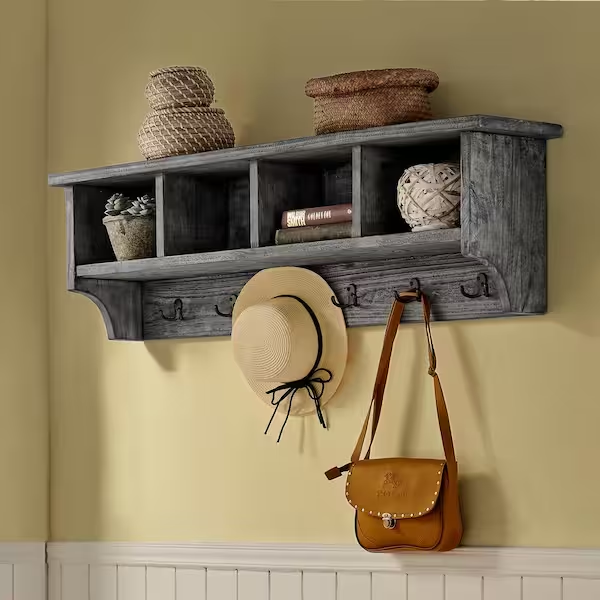
Aesthetic Enhancements to Your Space
Coat hooks contribute to the overall look of a room. They come in designs ranging from modern to rustic. Matching hooks with your décor adds a cohesive feel to your space. Stylish hooks can even serve as wall decorations or focal points. Materials like wood, metal, and plastic allow versatility in design. Choose coat hooks that complement your aesthetic preferences to elevate your space.
Choosing the Right Coat Hook for Your Space
Selecting the right coat hooks ensures functionality while enhancing the aesthetics of your space. Here’s how to choose the best option based on your specific needs.
Factors to Consider for Homes
- Room Size and Layout: Assess the available wall or door space. Choose hooks that fit the scale of the room.
- Household Needs: For large families, opt for multiple hooks or wall-mounted racks for better organization.
- Décor Compatibility: Match the hooks with the room’s style to maintain design consistency.
- Durability: For heavy coats or bags, select sturdy materials like metal or solid wood.
Hooks in homes should balance practicality and design. For example, wooden hooks add warmth to rustic interiors, while sleek metal hooks fit minimalist spaces.
Choosing Hooks for Offices or Workspaces
- Professional Appearance: Select hooks that complement office furniture and enhance a neat, professional look.
- Space Optimization: Use wall-mounted or over-the-door hooks to save floor space in tight work areas.
- Capacity: Freestanding coat racks may work better in shared spaces or meeting rooms to hold multiple items.
- Material Selection: Metal hooks offer durability, while plastic works for lighter office needs like lanyards.
In workspaces, ensure hooks do not intrude on pathways or workspace efficiency. Opt for neutral colors to blend seamlessly.
Tips for Hooks in Entryways and Mudrooms
- Heavy-Duty Designs: Use robust hooks to handle wet coats, umbrellas, and heavy bags.
- Multi-Level Hooks: Install hooks at different heights for accessibility by both adults and kids.
- Corrosion-Resistant Materials: In mudrooms with moisture, choose rustproof finishes for lasting durability.
- Decorative Appeal: Entryways are the first impression. Decorative hooks can double as design features.
For entryways, wall-mounted hooks with shelves can add extra storage for keys or small items. In mudrooms, hooks should prioritize functionality for outdoor gear.
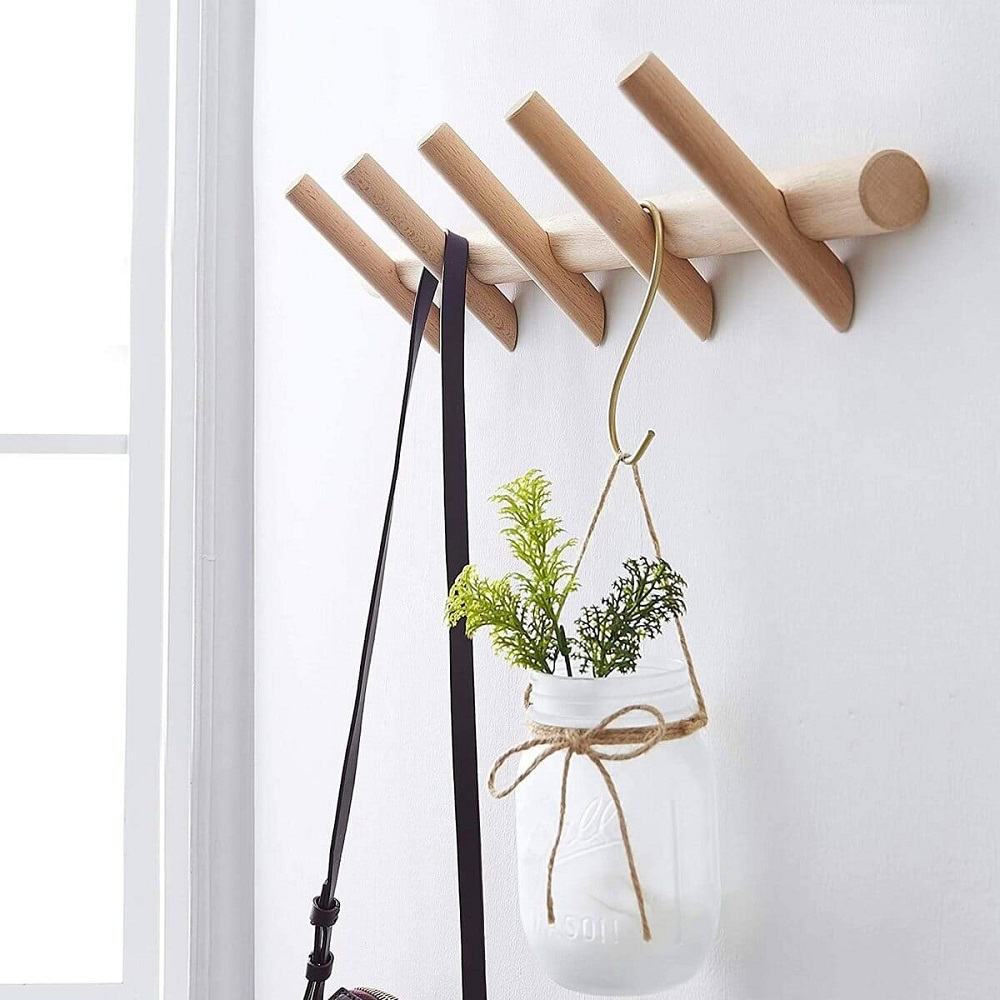
Creative Ways to Use Coat Hook
Coat hooks are not just functional; they can add creativity and style to your space. By thinking beyond traditional uses, you can transform coat hook into versatile and decorative elements.
Beyond Coats: Versatile Uses
- Storage for Kitchen Tools: Hang kitchen items like aprons, potholders, and utensils for easy access.
- Jewelry Organizer: Use smaller hooks to display necklaces, bracelets, or rings while preventing tangles.
- Gardening Accessories: In garages, hooks can hold gardening gloves, small tools, and hats for outdoor activities.
- Sports Equipment: For athletes, hooks help organize items like gym bags, helmets, or tennis rackets.
- DIY Art Display: String wire between hooks to showcase photos, postcards, or children’s art projects.
Decorative Coat Hook Arrangements
- Wall Art Formation: Arrange hooks in patterns like grids or circles for a striking visual effect.
- Theme-Based Designs: Choose hooks shaped like animals, flowers, or geometric designs to match your theme.
- Mixed Material Approaches: Combine wood, metal, and plastic hooks for an eclectic décor blend.
- On Shelves or Boards: Mount hooks onto decorative shelves for combined functionality and aesthetic appeal.
- Seasonal Displays: Change items hung on hooks to reflect holidays or seasons, such as wreaths or festive lights.
Hooks for Kids’ Spaces
- Colorful and Fun Designs: Choose hooks shaped like animals, stars, or toys to delight children.
- Low Placement for Accessibility: Install at a height kids can easily reach.
- Organizing School Items: Use hooks for backpacks, lunch bags, and coats for better morning routines.
- Setting Up Play Zones: Hang dress-up clothes, capes, or small accessories in your child’s playroom.
- Educational Use: Label hooks with names or pictures to help kids learn organizational skills.
Coat hooks can enhance every space in creative ways. Experiment with placement and design to maximize their potential.
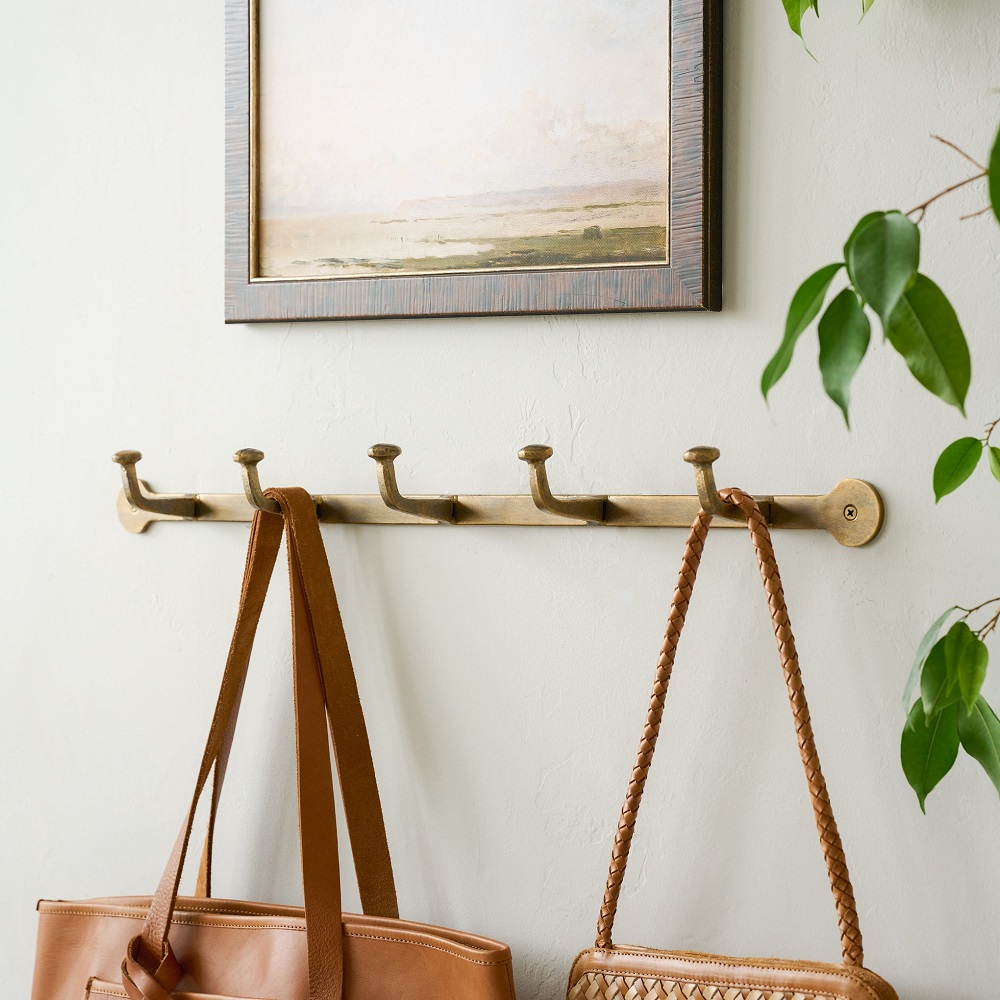
DIY Coat Hook and Customization Ideas
Adding a personal touch to your coat hooks can make them both functional and stylish. DIY projects and customization not only save money but also allow for unique designs that fit your space perfectly. Whether you’re repurposing materials or updating store-bought hooks, creativity can transform coat hooks into eye-catching elements.
Simple DIY Coat Hook Projects
Creating your own coat hooks is an easy and satisfying project. Here are some simple ideas:
- Repurpose Old Items: Use items like knobs, branches, or drawer pulls as hooks. Mount them on a plank.
- Pallet Wood Hook Rack: Attach hooks to painted or sanded pallet wood for a rustic look.
- Floating Shelf Combo: Combine a shelf with hooks underneath for added storage space.
- Pipe and Fittings Design: Assemble metal pipes and fittings for an industrial-style coat rack.
- Decorative Frame Backing: Mount hooks within a picture frame for a creative wall accent.
By reusing materials, you can create affordable and unique coat hooks that suit your décor.
Painting and Personalizing Store-Bought Hooks
Customizing store-bought coat hooks is a quick and impactful way to make them stand out. Here are some ideas:
- Painted Patterns: Use stencils or freehand designs to decorate plain hooks.
- Bright Colors: Paint hooks in bold hues to match or complement your space.
- Add Labels: Use small nameplates or stickers for organization, especially for shared spaces.
- Creative Backing Boards: Mount hooks on painted boards or decorative tiles for added style.
- Theme-Based Designs: Customize hooks for specific rooms, such as animal shapes for kids or sleek designs for offices.
Personalizing hooks can make them blend seamlessly or stand out as focal points in your space.
Maintenance and Care Tips for Coat Hook
Proper maintenance keeps coat hooks functional and looking great over time. Regular care prevents damage and ensures longevity. Follow these essential tips to maintain your coat hook effectively.
Cleaning Different Materials
- Wooden Coat Hook: Use a damp cloth to wipe dust and dirt. Avoid soaking or harsh cleaners to prevent warping or damage. Apply wood polish occasionally for a fresh appearance.
- Metal Coat Hook: Clean metal hooks with a soft cloth and mild detergent. For rust spots, gently scrub with steel wool or use vinegar. Consider applying a rust-preventive spray if exposed to moisture.
- Plastic Coat Hook: Wash plastic hooks with soap and water. Wipe gently with a cloth to avoid scratches. Plastic hooks are easy to clean and require minimal upkeep.
Ensuring Durability and Longevity
- Regular Inspection: Check screws or mounts for stability every few months. Tighten loose fittings promptly.
- Avoid Overloading: Keep within the specified weight limit to prevent strain or breakage.
- Prevent Moisture Damage: For wooden hooks, avoid placing them near damp areas unless treated against moisture.
- Protect Metal Hooks: Use coated metal hooks in humid conditions to avoid rusting.
- Repaint or Refinish When Needed: Refresh hooks with painting or polishing when they show wear and tear.
With regular cleaning and proper maintenance, coat hooks stay functional and improve the look of your space.
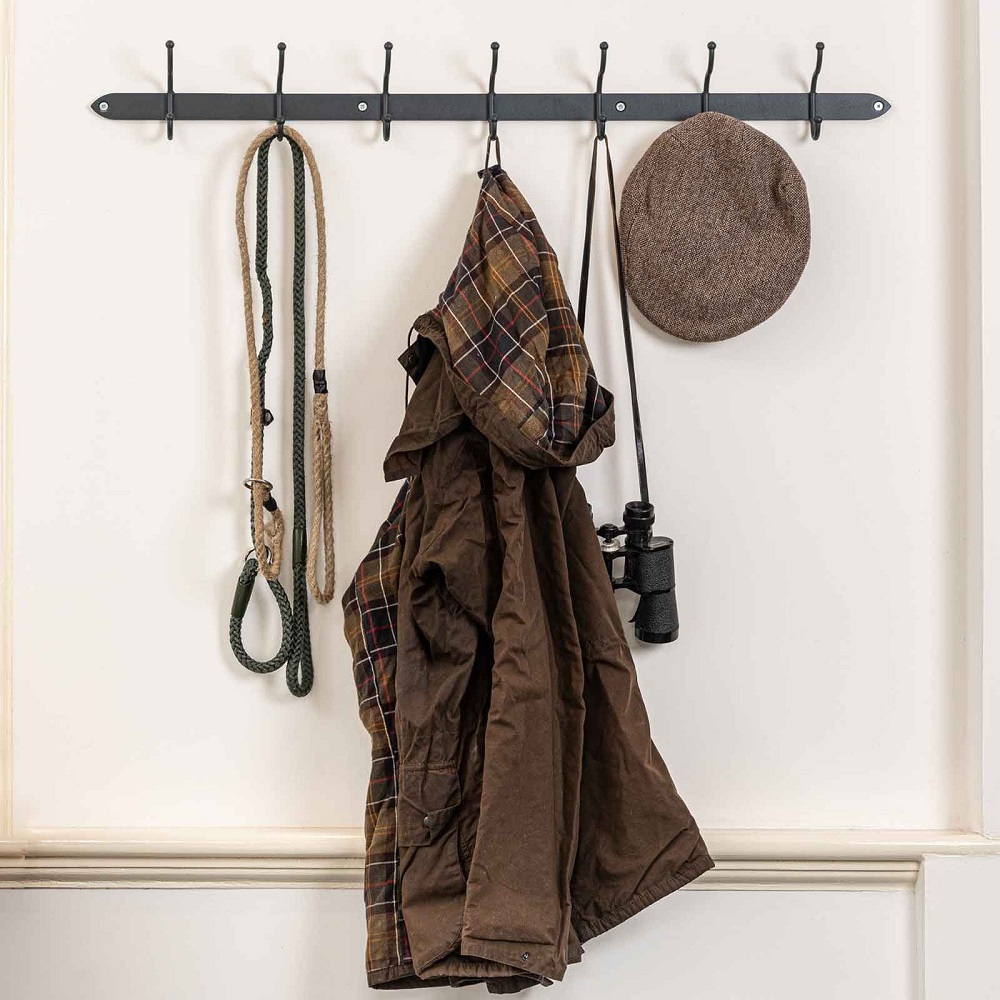
Conclusion
Elevating Your Entryway Aesthetics
In conclusion, coat hooks are a simple yet effective way to elevate your entryway with style and practicality. Their versatile nature allows for personalized organization while enhancing the aesthetics of your home. By understanding the importance of coat hooks, choosing the right designs, and maintaining them, you can create a functional and visually delightful space.
Celebrating Practicality and Style
As you embrace the advantages of coat hooks, remember that organization is just as important as style. Combining both elements will ensure that your entryway remains welcoming for family and friends alike. With thoughtful planning and creative touches, your coat hooks can become a focal point in your home that reflects the character and warmth of your family.
Taking the time to optimize your entryway with stylish and functional coat hooks not only organizes your space but also creates a welcoming atmosphere. With practical solutions and design elements, your entryway can reflect your family’s unique style and serve as a delightful introduction to your home. Embrace the possibilities, and transform your entryway into an organized haven that blends functionality and beauty seamlessly.
